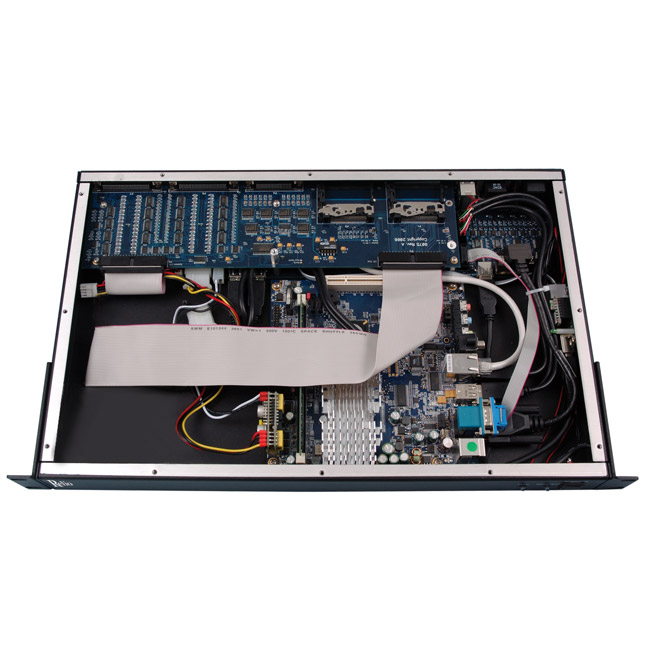Overview
A leading radio broadcasting company required a reliable, small, cost-effective solution for monitoring and control at transmitter sites. In addition to the dense I/O requirements, the customer requested that the design allow for easy upgrade or replacement of the single-board computer. Sealevel designed a custom Relio system providing a variety of serial, analog, and digital I/O that can be queried or send alerts via the internet or a standard telephone connection.
Application Requirements
A fanless, diskless system capable of running under Windows XP Embedded or Linux was specified. To minimize rack space used, a 1U (1.75) 19″ rackmount enclosure was desired. A significant amount of I/O is required to accomplish the monitoring and control needed to ensure quality AM and FM radio transmissions:
- 64 Digital Outputs (24VDC @ 250mA)
- 64 Isolated Digital Inputs (5VDC – 30VDC)
- 24 14-bit Analog Inputs (0-10VDC)
- Dual 10/100BaseT Ethernet
- Four USB 2.0 Ports
- Four RS-232/422/485 Serial Ports (Software Selectable)
- Voice Modem with DTMF
- Power and Status Indicator LEDs
The Sealevel Solution
For maximum flexibility and cost-effectiveness, a Mini-ITX form factor was chosen for the single-board computer. The 1.3GHz VIA processor used provides excellent computing capabilities with minimum power dissipation and does not require a cooling fan. To accommodate the 1U enclosure, high-density SCSI connectors were chosen to expose the analog and digital I/O signals on the rear of the chassis. Cables connect the system’s I/O to an external termination board with easy-to-use removable screw terminal connectors. The computer is silkscreened with the customer’s name and logo (not shown) to customize the appearance.
Key Design Challenge
Interfacing I/O Requirements to the Mini-ITX Single Board Computer
Mini-ITX is a proven form factor supported by a number of vendors. However, Mini-ITX boards typically offer minimal I/O expansion options, usually one PCI slot. To meet this customer’s application requirements, Sealevel engineers designed a custom I/O board that interfaced to the SBC via an internal USB connection. The I/O board includes a microcontroller that polls the analog and digital I/O and communicates with the host via USB. This design fulfills the requirement for easy processor upgrade or replacement since the I/O board is not mechanically dependant on the SBC in any way. The USB connection provides a fast, reliable interface that allows the I/O to be polled at a 100ms scan rate using the software driver provided by Sealevel.

